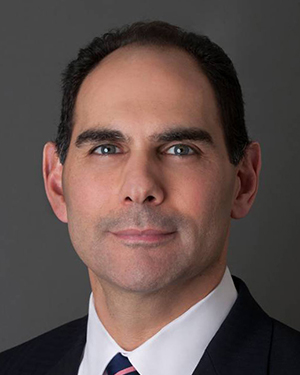Both private and public REITs have faced formidable challenges over the past year. Private non-traded REITs have been battling redemption requests, while public REITs are trying to claw back after a sharp drop into negative returns in 2022. Armada ETF Advisors is one group that sees those current challenges as an opportunity, with a new strategy that has a foot in both the private and public sectors.
Armada and partner Tidal Financial Group recently launched its private real estate strategy via Liquid REITs ETF (Nasdaq: PRVT). This is Armada’s second real estate ETF after launching HAUS in February 2022. Effectively, PRVT is following the allocation “roadmap” of some of the leading private REITs, such as Blackstone and Starwood, and executing on that strategy by buying select public REITs that align with those property sectors and geographic footprints.
WMRE recently talked with Armada Managing Director David Auerbach and Portfolio Manager Alfred Otero to hear more about the firm’s investment strategy and views on the REIT market.
This Q&A has been edited for length, style and clarity.
WMRE: You’re launching the new ETF at a time when things are a bit choppy. Why now? Why is this a good time to launch a new REIT ETF?
 David Auerbach: There has been recent data that came out from Nareit highlighting the valuation gap between private real estate funds and listed REITs. According to Nareit, the valuation gap is at the widest level that they’ve seen. When you look at the divergence between private and public, they note that in seven previous cycles, the gap diverges and then reconverges. The size of the gap will determine the level of outperformance of the listed REITs coming out of that divergence. In a nutshell, the wider the divergence, the more significant the outperformance of the listed REITs coming out of that. So, we feel that this is the perfect time to pivot towards listed REITs.
David Auerbach: There has been recent data that came out from Nareit highlighting the valuation gap between private real estate funds and listed REITs. According to Nareit, the valuation gap is at the widest level that they’ve seen. When you look at the divergence between private and public, they note that in seven previous cycles, the gap diverges and then reconverges. The size of the gap will determine the level of outperformance of the listed REITs coming out of that divergence. In a nutshell, the wider the divergence, the more significant the outperformance of the listed REITs coming out of that. So, we feel that this is the perfect time to pivot towards listed REITs.
There are two other factors that are in play here, and that is cost and liquidity. Cost, when you look at the layered investment fees of the private real estate funds that are out there, there are three levels of fees that they charge—selling and servicing fee, annual management fee and the performance participation entrance fee above a certain hurdle rate of return. When you add up all those fees, at the end of the day it ends up costing the investor over 3.5% a year to be invested in those funds versus our liquid ETF that charges 59 basis points.
As far as liquidity is concerned, we see the headlines every single month talking about gated redemptions at the private REITs at 2% per month and 5% per quarter. There are other fund vehicles as well that have gated investor redemptions. ETFs are publicly traded securities that can use publicly-traded REITs that trade millions of shares a day to approximate the portfolios of those private funds that have assembled great portfolios in great markets by great management teams. We’re just going to bring a lower cost, more liquid vehicle at today’s current market valuations.
 Alfred Otero: There is a good case for the relative value opportunity today between listed versus non-traded. I would also add that there is an absolute case to be made for REITs right now. Broadly speaking, REITs were down about 25% in 2022. Fundamentals are moderating today as the economy moderates, and we see the impacts of inflation work its way through the system. That being said, fundamentals are still holding up for a couple of critical reasons. One is employment and two is household and consumer [spending], both of which are still on very solid footing. So, when you look at valuations and where the sector is trading overall at still sizable discounts to net asset value and sizable discounts on a multiple basis versus history, we think now is a good time to invest in REITs on an absolute basis.
Alfred Otero: There is a good case for the relative value opportunity today between listed versus non-traded. I would also add that there is an absolute case to be made for REITs right now. Broadly speaking, REITs were down about 25% in 2022. Fundamentals are moderating today as the economy moderates, and we see the impacts of inflation work its way through the system. That being said, fundamentals are still holding up for a couple of critical reasons. One is employment and two is household and consumer [spending], both of which are still on very solid footing. So, when you look at valuations and where the sector is trading overall at still sizable discounts to net asset value and sizable discounts on a multiple basis versus history, we think now is a good time to invest in REITs on an absolute basis.
WMRE: Nareit does have research to support that historical outperformance for REITs coming out of a down cycle. Is that a tough sell for investors right now who may be concerned about catching that falling knife, or do they recognize the value proposition?
David Auerbach: The small average investor can’t really invest in private REITs. They say the minimum investment might be $2,500, but some of the wirehouse firms have a higher point of entry. So, these private REIT vehicles are geared towards high-net-worth investors, the ultra-sophisticated investor. We’re bringing this private real estate-like fund to all investors. We’re trading at about $20 per share. So, you can buy one share of PRVT for $20 and change. Our product is geared towards all investors. We’re not necessarily saying to that high-net-worth investor, “Go sell your entire holding in BREIT (Blackstone Real Estate Income Trust) and buy PRVT.” We think it’s a good complement to play into the recovery of the publicly-traded REITs and a good hedge to that private REIT portfolio.
Alfred Otero: Not only is it a good complement, but it is also a way to dollar cost average a little bit. If you own BREIT, you can get in the queue to try to sell if you’re concerned about where pricing might go, but I can buy this fund right now that looks and feels a lot like BREIT in a listed wrapper with a lot of liquidity and essentially average down my position in BREIT. It is a tough environment, but I think we offer something that is not necessarily widely offered in the current environment.
WMRE: Can you briefly describe the real estate strategy for PRVT?
Auerbach: Blackstone, Starwood KKR and others put out pie charts on what their portfolios represent. We can use their 10-Q as a roadmap that they have assembled of bricks-and-mortar hard assets and use publicly-traded REITs in terms of both sector and geography to mimic that portfolio. From a high level, BREIT is about 53% residential, 25% industrial and then a couple of percent for other sectors, such as hotel, shopping centers, class-A office, life science, self-storage, healthcare and some others.
We’ve done the same thing—about 52% of our portfolio is in residential, which creates some overlap with HAUS, but we also have industrial REITs such as Prologis, EastGroup, Rexford, VICI for gaming since Blackstone owns a couple of assets in Las Vegas. Then we can use companies like Kimco or Regency or Brixmor to represent the retail portion, or Alexandria or Boston Properties for class-A office or life science exposure. We’re basically using their portfolio and adding up the assets in terms of geography and sector and trying to put the best of the best REITs out there that represent that portfolio.
WMRE: Based on that roadmap, what sectors are you steering away from these days?
Alfred Otero: It’s no secret that the most challenged sector right now is the office market. Maybe you could argue that Sun Belt markets like Dallas and Austin and Charlotte are holding up a little bit better than their coastal peers, but it is still a very challenging environment because of hybrid work and what it means for the industry going forward.
That said, unlike the regional mall industry of a decade ago, there are going to be winners and losers. Even though office is being painted by a very broad brush today, if you are in a city that is still seeing decent job growth and has signs of vibrancy and if you are a landlord that owns high quality, new assets and you’re offering something differentiated to users, there is going to be demand. And that’s where there is opportunity in a sector that is so beaten down today.
We believe, as do our peers that we’re looking at on the private side, that there are opportunities for these beaten up sectors, and office is a great example of that. We have about 3% of the portfolio dedicated to office, and that could potentially rise over time as we get more validation that hybrid can still make the economics work for the office landlord. That is an example of where we can go tactically in the portfolio.
WMRE: Where do you see investment opportunities in the current market?
Alfred Otero: In terms of our larger core holdings in residential, we are still under-housed here in the U.S. I saw one study recently that said we were under-housed by approximately 5 million units. Even though in the apartment sector we are seeing quite a bit of supply right now, we think that will be peaking over the next several quarters for a host of different reasons. So, right now, we see good value in the multifamily space, and again, lots of overlap with HAUS in that area. At the end of the day, the top-down aspect of the process is really looking at the thematic investment process of some of these sponsors, i.e. Blackstone and Starwood, that over the years have really proven to be very good asset allocators. If we follow that model and then from the bottom up be judicious stock pickers, we think there is something to be said for that type of process.
WMRE: There is plenty of competition in the real estate ETF universe, including some big players that soak up a lot of the capital inflows. How is PRVT positioned to compete in that sector?
David Auerbach: PRVT is actively managed, and we think it is a unique angle to approach. If we were launching another index-based ETF like VNQ (Vanguard Real Estate Index Fund ETF) or IYR (iShares US Real Estate ETF) we’d be walking into a very deep pool. But for us launching PRVT, it is currently the only fund of its type on the market as far as the ETFs are concerned. We think this is a great opportunity and a first mover situation, considering the headlines going on in the private real estate funds. We also feel that this is a great complement to that broad-based index fund that is out there.
WMRE: What do you think are the keys for navigating amid some of the current market challenges?
Alfred Otero: It is a challenging environment. The fact that we are actively managed and can invest with companies that are rock solid in so many aspects, whether it is the balance sheet or just the quality of the portfolio and where that portfolio lines up, we can really curate this portfolio to be as defensive and as rock solid as we like. As the market becomes less challenging, we can adapt and adjust the portfolio as well, and we have every intention of doing so. So, we have a lot of flexibility in what is a challenging environment.





